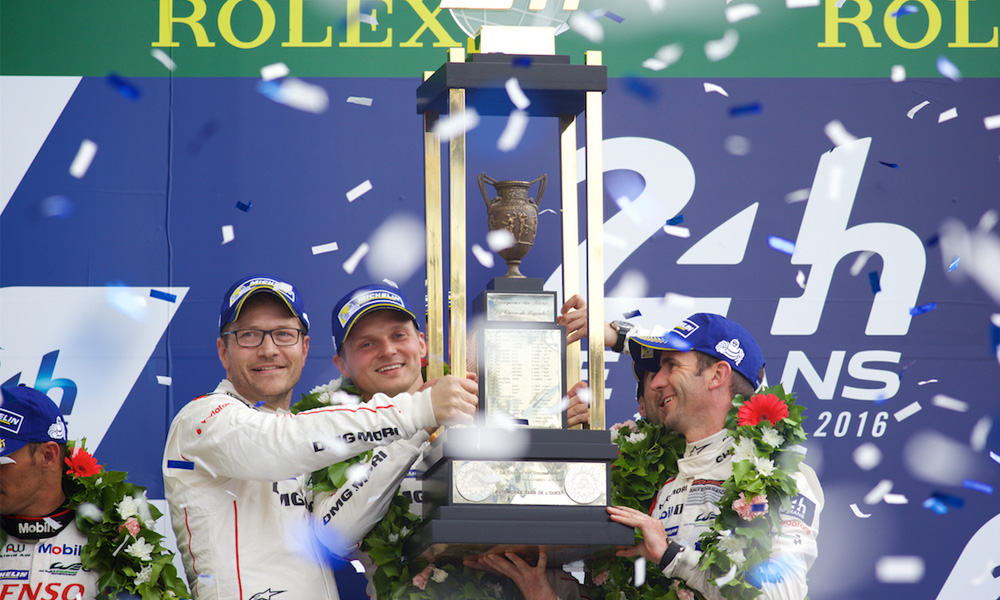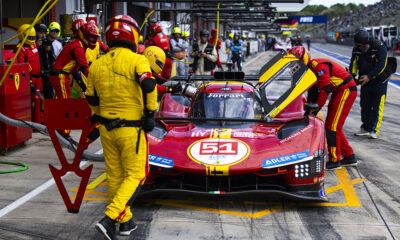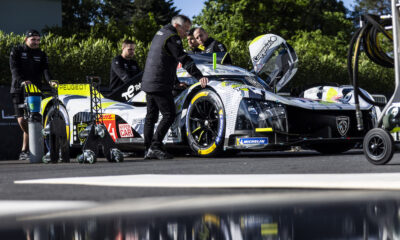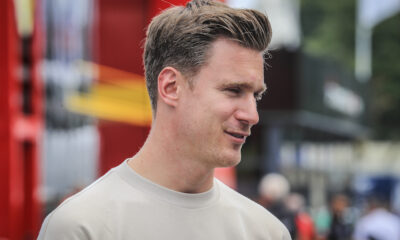
Photo: John Dagys
We take a look back at some of the key moments in Porsche’s 919 Hybrid effort through the eyes of those involved with the championship-winning program. Next up is Porsche LMP1 team principal Andreas Seidl. Click Here for the full archive.
Having helped build and steer the factory program from the start, Andreas Seidl has fond memories of Porsche’s four-year run with the 919 Hybrid effort, which comes to an end with this weekend’s FIA World Endurance Championship season-ending Six Hours of Bahrain.
While ending its LMP1 era with three consecutive victories in the 24 Hours of Le Mans and three World Drivers and Manufacturers’ Championships, Seidl admitted the early stages of the program proved to be trying times for his staff in Weissach.
“Most definitely the initial testing period [in 2012-13] until the first race, that was the most difficult phase,” Seidl told Sportscar365. “We put together 260 people in quite a short period of time from different projects, from everywhere.
“And at the same time we had to develop the most complex race car that has ever been done at Porsche.
“To get this together with all the problems that you have at the beginning with such a car, which is normal, was difficult to fight that through.”
The car’s competition debut in the 2014 season-opener at Silverstone, however, showed promising results, with Mark Webber, Timo Bernhard and Brendon Hartley scoring a third place overall finish.
Seidl said that first podium result came as the program’s first big success.
“It was a lucky one with the weather conditions, but just to finish the race and be on the podium was the first time we had a positive situation since the beginning of the project,” he said.
“In the end, throughout the first season, I think we were just simply getting better and better. You could see that also from race to race that we got more and more sorted.
“The performance was getting up step by step, and then obviously it was a highlight to win.
“Sao Paulo was a highlight for two reasons, because it was the first time really we saw from free practice onwards we were in a position to fight for the win in terms of pace.
“Then secondly, it was great to see the team was already able to stand that pressure also, because we delivered then on Sunday. It was a big relief for me, for all of us.
“At the same time, obviously, it was tough with the accident Mark [Webber] had, but luckily we knew quite quickly that he was OK.”
Seidl said his personal highlight, however, came seven months later at Le Mans, when Nick Tandy, Earl Bamber and Nico Hulkenberg delivered Porsche the first of its three consecutive overall victories in the French endurance classic.
“For me personally it was also the biggest operation I’ve ever been involved in, with three cars,” he said.
“The preparation for it was huge, unbelievably huge, and to get this sorted as a team, to run through with three cars without technical issues…
“We didn’t see the box with all three cars throughout the 24 hours, unless for the bodywork repair that we didn’t have to do but we did it because it was during the safety car.
“We had the performance also in this race, and also on the operations side it was the first time we were clearly the best in the pit lane in terms of pit stop times and so on. That was really good to see.
“For the entire team, it was really the peak of all the two-and-a-half years before where you work so hard to get everything sorted, to get everything together in such a big operation.
“To win it against Toyota and Audi with all their experience and their past, that was special. To secure this win then was definitely a highlight.”
With nearly a 50 percent win rate over its lifetime, which eclipses Audi’s five-year run with its R18 from 2012-16, Porsche stands as the most successful LMP1 manufacturer in WEC history.
Seidl believes there were three fundamental reasons for its success.
“First of all, I think it was the right decision to do a separate unit at Porsche which is fully focused on this [LMP1] project, with quite a lean structure also,” he said.
“The second thing was the decision to do not just the development in Weissach but the entire race team from Weissach, so we had the shortest possible way of making decisions, of solving conflicts and so on, which you always have in such a program.
“And the third thing was as I said before, I think we had all throughout this period always the full support from top management, all the board at Porsche.
“We didn’t have to accept a lot of compromises, and by this we could also go straightaway for the most aggressive car concept.
“We all know as well that a project of this size would hardly be around in the future of motorsport, and that’s also something I have in mind at the moment.
“It was special to build that all up from the beginning, to have also the possibility to build it up from scratch, and then to get it step by step to such a level of perfection.
“It’s never perfect, but we had races where it was close to perfection.
“That is something special, and this is something I will miss.”























